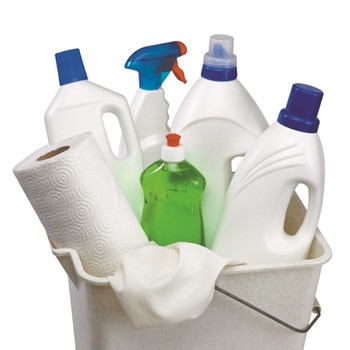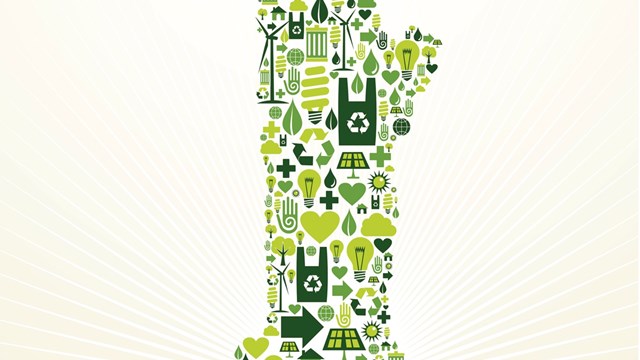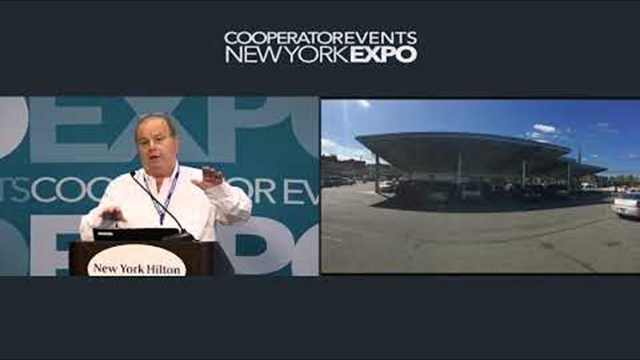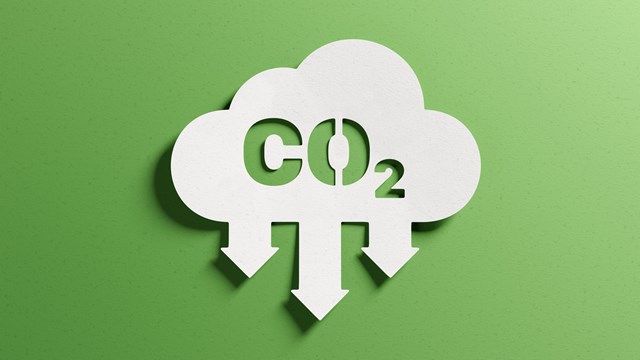
Looking to save the planet—or just a few bucks—more and more New Yorkers are looking to “green” their lifestyles. Environmental watchdogs are quick to point fingers at gas guzzling automobiles as prime contributors to climate change, but according to the U.S. Energy Research and Development Administration, residential buildings account for 21 percent of all carbon emissions in the United States. That makes housing almost as big a culprit as transportation, which surprisingly generates only about 27 percent of the country’s harmful emissions.
But in the midst of a so-called economic “slowdown,” many are rightfully concerned with the overhead costs of updating an older building to new green standards. Fortunately, the marketplace abounds with environmentally friendly products, all of which have led to competitive prices and a higher standard of performance. According to industry experts, co-op and condominium communities can expect a strong ROI on their greening investments, part of which will come from the new appeal your sustainable building will have to potential tenants.
Energy Efficiency
The “green” movement is a loose and sometimes vaguely defined conglomeration of initiatives intended to reduce humans’ impact on the environment and develop sustainable approaches to energy production and consumption. Among them are efforts to recycle, conserve water, and reduce dependence on carbon-emitting fossil fuels. But it’s the last of those goals that has received the most media attention of late, and rightfully so. Dependence on fossil fuels puts a strain not just on our planet but on the U.S. economy as well. As fuel prices skyrocket, the most effective way to help cut costs is to decrease demand by making your building more energy-efficient.
According to Todd Larsen of the green non-profit Co-op America, based in Washington D.C., the first and most basic step board members can take toward reducing energy use is to switch the lighting in common areas from incandescent to compact fluorescent lighting or CFLs.
“The upfront cost is a little higher,” he says, “but over the lifespan of those bulbs, they’re actually a lot cheaper.”
In fact, the U.S. government’s Energy Star program states on its website that Energy Star-certified fluorescent light bulbs use “75 percent less energy than standard incandescent bulbs and last 10 times longer.” Admittedly, the bulbs are roughly double the price of standard bulbs, but the long-term savings is clear. As for performance, fluorescent bulbs hold up to consumer expectations with only a few minor exceptions: namely, they are ineffective with dimmers and electronic timers, and for spotlights many consumers still prefer the more direct light of incandescent bulbs.
To achieve a more radical increase in energy efficiency, experts agree you should start with an energy audit, which assesses how your building measures up to others like it.
As Cecily Kaz, a senior sustainability consultant with Steven Winter Associates, Inc. in Manhattan, explains, “Cost is always a big part of an energy assessment—there’s a payback analysis that’s done. For example, say you hire an energy consultant that says, ‘We think you should replace your boilers with 94 percent efficient boilers.’ The energy analysis should tell you exactly how long it would take for that investment to pay for itself based on the energy savings.” (Full disclosure: Energy audits are among the services offered by Kaz’s firm.)
Energy consultants consider every component of your building, from the hot water heater to the roof to cracks in walls, all to help determine where your building can improve most in efficiency. They can also help explore your options going forward.
A roof, for instance, plays a major role in properly insulating a building.
“Adjustments could range from just buying a roof with a light color—which makes a difference in a warmer climate—to actually having a green roof, some of which are fairly competitive in price and add the feature of actually keeping the building cool,” says Larsen.
In addition to keeping a building cool, state lawmakers in June approved a bill providing tax breaks for building owners who plant grass and other forms of greenery on at least half of their available rooftop space. They can now receive a one-year tax credit of $4.50 per square foot, up to $100,000.
Of course, it’s important to think of a building as the complicated system, that’s why consultants help make sure the energy you save with a new roof isn’t lost elsewhere.
“What we strive to achieve is at least a 20 percent reduction in energy used on the whole,” Kaz says. “And getting up to a 30 percent reduction is certainly achievable.”
To help finance your upgrades, the New York State Energy Research and Development Authority (NYSERDA) offers low interest loans on building materials that meet green benchmarks set by LEED, the third-party green building certification program developed by the U.S. Green Building Council. LEED offers a comprehensive explanation of its rating system on its website (www.usgbc.com /leed.)
Green Products
Just a few years ago, the market for green products was tiny, and the lack of competition lead to overpriced goods. The green culture boom of the last few years has created a thriving market, filled with consumer-friendly competition. But as Kaz notes, “Some products might not be as good”—or as green—“as you think they are.”
When it comes to products like paint and floor cleaners, the costs and benefits of going green—and indeed what really makes a product “green” in the first place—can seem poorly defined, which is why the non-profit Green Seal began offering third-party green certification for all sorts of goods.
“The main difference [between green products and non-green products] is the formulation and ingredients of the products…Traditionally degreasers and cleaners have ingredients such as butyl and phosphates and caustics… that are considered hazardous ingredients,” says Steven Wels, vice president of DEC Green in the Bronx. “You won’t find many of those ingredients in any green cleaning products. In many instances some of the green cleaning products will be bio-based, meaning that they are made from sugar, corn, soy, sugar beets, wheat, natural ingredients.” These bio-based products are a far cry from “greenwashed” products, which are typically hazardous products in an eco-friendly package, marketed as green products.
According to Wels, agencies like Green Seal certify products to meet “strict standards of formulation,” in addition to monitoring how concentrated a product is. Ready-to-use products, says Wels, create more waste than a concentrated solution that can produce as “much as 128 gallons or as little as 32 gallons out of…one gallon [of solution,] in order to meet minimum dilution requirements…They also have to minimize the environmental footprint.”
In operation since 1989, Green Seal is the oldest and largest eco-label in the United States. Their website (www.greenseal.org) provides a list of some 2,700 certifiably green products, many of which are already available at your local market or home repair store. In addition to meeting a long list of green criteria, Green Seal takes the extra step of confirming that the products perform as effectively as their non-green counterparts. Sometimes, the cost of all this is passed along to the consumer. Often, it is not.
“We certify a lot of products in a lot of different price ranges,” says Linda Chipperfield, vice president of marketing/outreach for the non-profit, which is based in Washington D.C. “But we have seen many cost-competitive products that are green-certified. Most of the major paint brands have a line that is Green Seal certified—they’re actually sold in Lowe’s. It’s a myth that green products have to cost more, it really is.”
According to Chipperfield, Green Seal evaluates “the entire lifecycle of the product.” As an example, she mentions a few of the many criteria Green Seal uses to assess cleaning products. They can’t contain carcinogens. They have to be non-corrosive to the skin and eyes. The packaging must be made of out of recyclable or recycled material.
Many cleaning services already have access to Green Seal certified products, if not for the customer’s sake then for the safety of the custodians themselves. On its Green Pages website (www.greenpages.org), Co-op America provides a comprehensive list of green service providers throughout the United States.
“We’re trying to reduce environmental impact,” Chipperfield says, “but it also has to do with the impact on human health. Even the insurance companies are starting to sit up and take notice, because the use of high chemical content products can be dangerous for workers.” She claims insurance companies are already moving toward offering financial breaks to employers that maintain an environment free from harmful chemicals.
Leading by Example
At the moment, greening your building might seem like an unfair burden to take upon oneself, especially when neighboring communities continue to emit carbon as if we had polar ice caps to spare. (This, not coincidentally, is a favorite argument of the anti-Gore lobby in Washington: “Why should Americans stop polluting when China and India are making an environmental mess big enough for all of us?”) The answer is that leading by example really does work. The green movement began with fringe advocacy groups and has blossomed in recent years into a veritable cultural phenomenon, and we may soon reach a time when carbon-spewing buildings are as rare as a lone smoker on a cold day in Manhattan.
According to Judith Webb of the U.S. Green Building Council, the green culture will only become more prominent as climate change and fossil fuel shortages become increasingly pressing issues. And where culture cannot succeed on its own, government has begun to step in to make sure people are moving in the right direction.
“We’re all about market incentives,” Webb says. “That’s a great way to get people started. Some local communities have started to mandate green living. That’s not necessarily something we support, but people need to do what they need to do. We’re all about doing things in a practical way, not radically. Incremental steps. We advocate trying to keep people moving forward.”
It is also true that individuals, not just co-op boards and government officials, often make profound impacts on the sustainability of their environment. From turning the water off while you’re brushing your teeth to unplugging your cell phone charger when it’s not being used, every little thing helps contribute to a cleaner future.
“The more people that do it, the bigger it becomes,” Larsen says. “And it’s a great thing to be a part of from the beginning.”
Jonathon J. Levin is a freelance writer and copy editor living in Philadelphia.









Leave a Comment